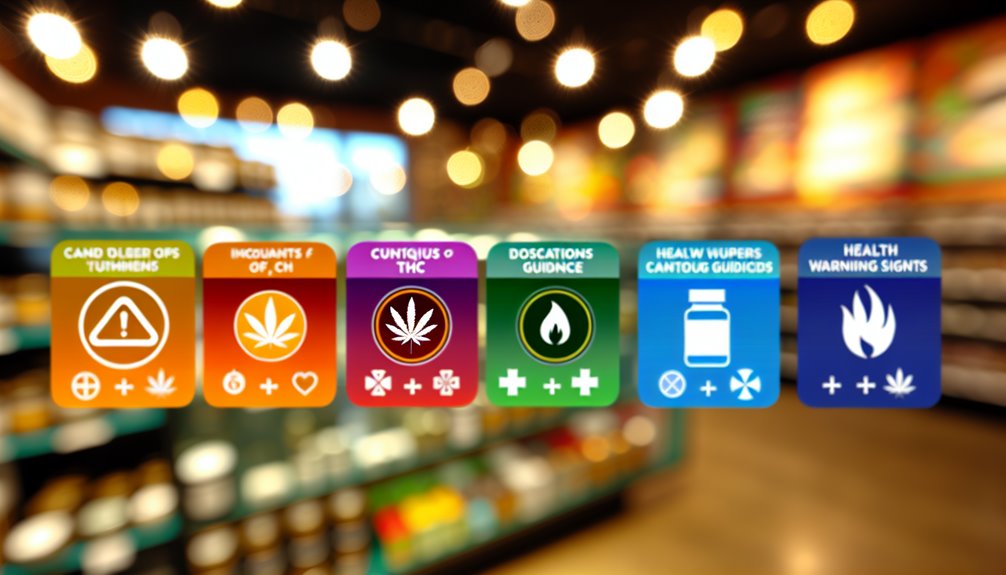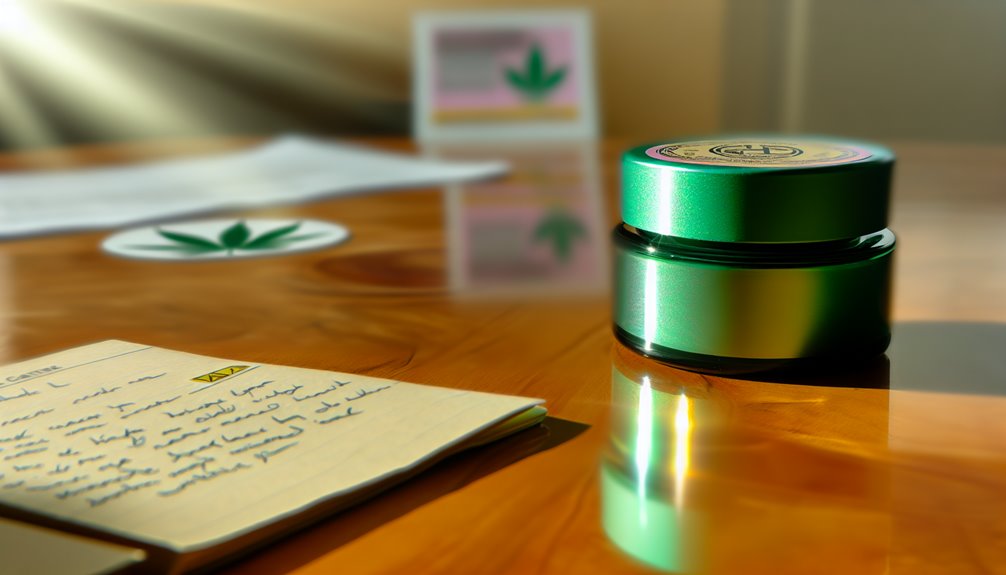You’re seeing new Maryland THC labels designed to be clearer and safer, but they can still be confusing at first glance. You’ll now find standardized totals for THC and CBD, plain-language ingredients, extraction notes, and testing dates for traceability. Warnings about impairment and delayed onset are more prominent, and serving sizes are defined by product type. Knowing how to spot red flags and verify batch COAs helps you dose confidently—so here’s how to make each section work for you.
Why Maryland Updated Cannabis Labels and What Changed

Although labeling rules can seem wonky, Maryland updated cannabis labels to give patients clearer, more reliable information at a glance. You asked for better label clarity and dosing transparency, so regulators refined standards to reduce confusion, align test reporting, and help you serve patients safely. Updates emphasize plain-language ingredients, batch and test dates, standardized units per serving, and prominent warnings. You’ll also see clearer extraction method notes and storage guidance to preserve potency. Consistent formatting reduces variance across brands, helping you compare products quickly. These changes support safer titration, fewer dosing errors, and more accountable quality control from cultivators and processors.
How to Read Total THC, Total CBD, and Total Cannabinoids
Start by zeroing in on three numbers: Total THC, Total CBD, and Total Cannabinoids. These figures reflect the expected active amounts after decarboxylation, using Conversion Factors to translate THCa and CBDa into their neutral forms. Read labels with care and align choices with patient goals and safety.
- Confirm “Total THC” includes THCa converted (THCa × 0.877 + THC) and suits your symptom targets.
- Check “Total CBD” (CBDa × 0.877 + CBD) for calming, anti-inflammatory support.
- Review “Total Cannabinoids” to gauge overall pharmacologic breadth.
- Compare batch COAs and label dates to make certain current potency and transparent testing.
Serving Sizes and Potency: Edibles, Vapes, and Flower Compared

With Total THC, Total CBD, and Total Cannabinoids in mind, you now need to match potency to form factor—because 10 mg in an edible doesn’t behave like 10 mg in a vape or a bowl. Edibles convert THC in the liver, creating stronger, longer effects; start with 1–2.5 mg and wait full onset times (60–120 minutes). Vapes deliver rapid absorption; begin with one short inhalation and reassess after 10–15 minutes. Flower varies by inhalation depth and combustion losses; take one small puff, pause, and observe. Use microdosing strategies to maintain function, track response in a journal, and adjust gradually for consistent relief.
Terpene Profiles, Batch Numbers, and Testing Dates Explained
Because labels can be crowded with numbers and jargon, focus on three essentials that shape safety and effects: terpene profile, batch number, and testing date. You can serve patients well by reading them together.
1) Terpene profile: Look for dominant compounds, Terpene Origins, and Aroma Mapping to anticipate effects and flavors. Expect Profile Evolution over time, especially in older products.
2) Batch number: Verifies traceability and consistency if you need to replicate results.
3) Testing date: Fresher dates reduce terpene loss and oxidation; avoid long gaps.
4) Lab Variability: Results can differ by laboratory; compare ranges, not single numbers, and ask dispensaries for certificates of analysis.
Required Warnings, Packaging Rules, and Patient Compliance

Although labels vary by product type, Maryland requires clear warnings, child-resistant packaging, and strict storage and use instructions to protect patients and the public. You’ll see Warning icons for THC, impairment risks, pregnancy, and delayed onset. Follow dosage guidance, avoid driving, and store products locked, dry, and out of sight. Childproof packaging must be tamper-evident and resealable; don’t transfer contents to noncompliant containers. Keep original labels intact for verification. Dispose of expired products per dispensary guidance. Share safety information with caregivers, and document your response to each product. If packaging is damaged or labeling unreadable, return it before use.
Red Flags on Labels and Tips for Confident Dosing and Product Comparison
You’ve secured compliant packaging and read the required warnings; now sharpen your eye for red flags and learn how to compare products confidently. Scan labels for clarity, test dates, batch numbers, and ingredient transparency. Be cautious with misleading metrics that oversell potency or ignore dose-per-serving. Watch for hidden additives, vague “proprietary blends,” or unverified terpene claims. Prioritize products with third-party lab COAs.
1) Confirm THC per serving and total THC; adjust dose gradually.
2) Check harvest/manufacture dates and storage guidance.
3) Verify contaminants: pesticides, heavy metals, solvents, microbes.
4) Compare terpene profiles tied to your goals.
When uncertain, consult your clinician and pharmacist.
Conclusion
As we wrap up, I want to emphasize how important it is to feel confident and informed about your choices when it comes to cannabis products. Here at Fells Point Cannabis Docs, we’re more than just a resource; we’re a community dedicated to supporting you on your wellness journey. If you have any questions or just want to chat about what you’ve learned, we’d love for you to visit us in person or give us a call at (410) 401-4200. We’re here to help you navigate this exciting world of THC and CBD, and together we can find the best options for your needs. Looking forward to seeing you soon!
